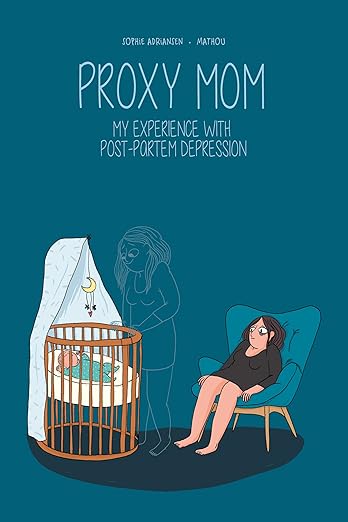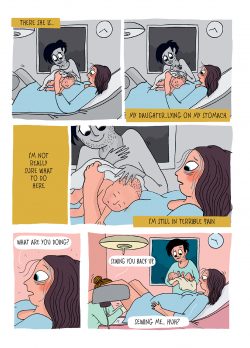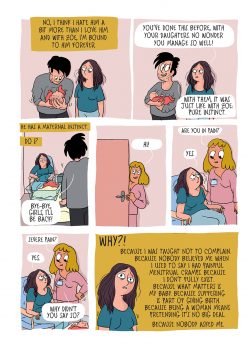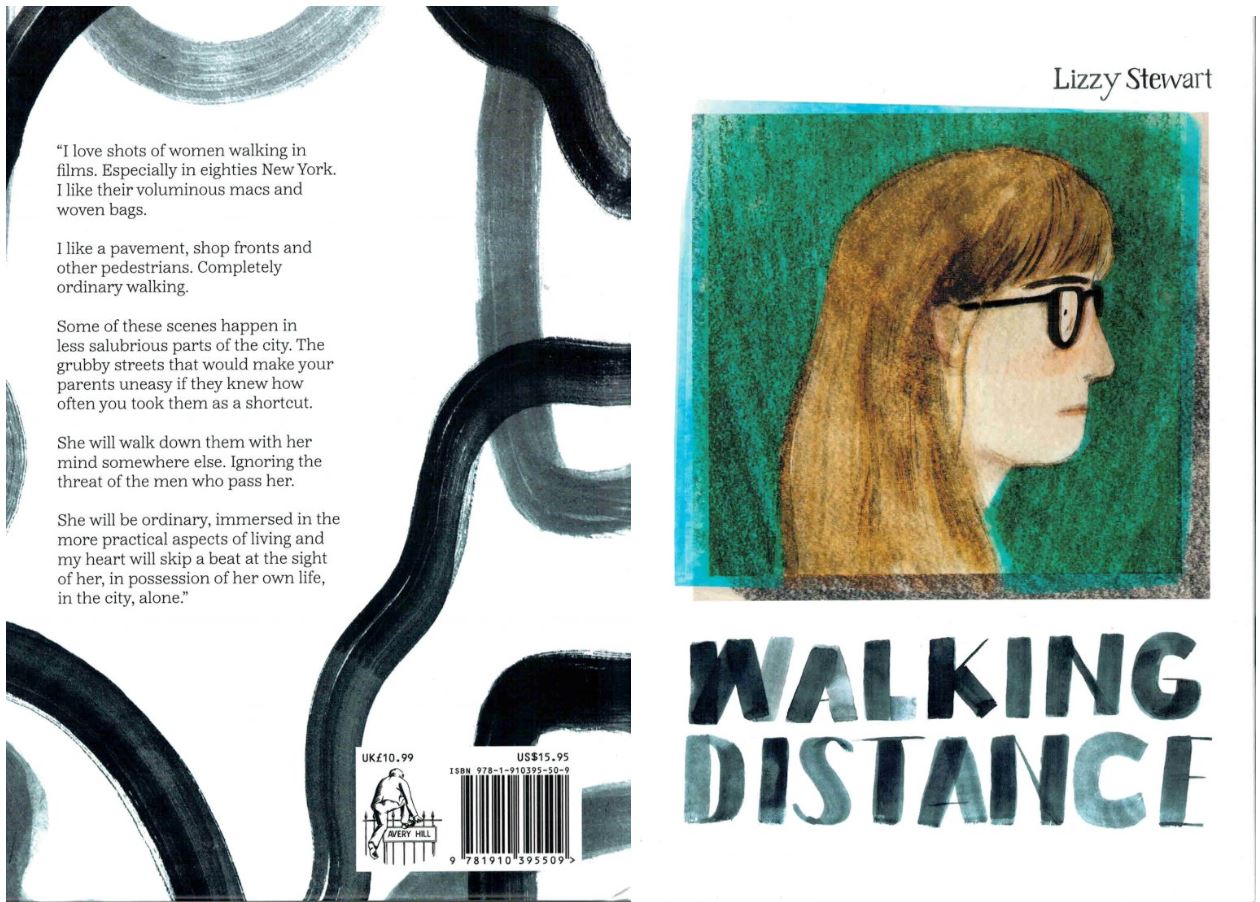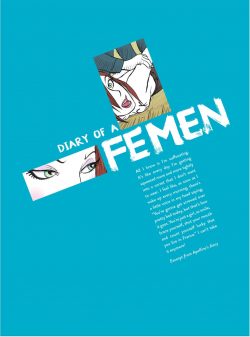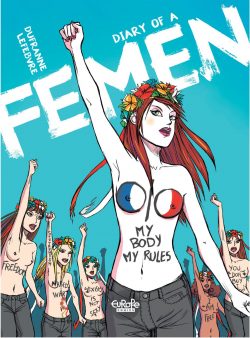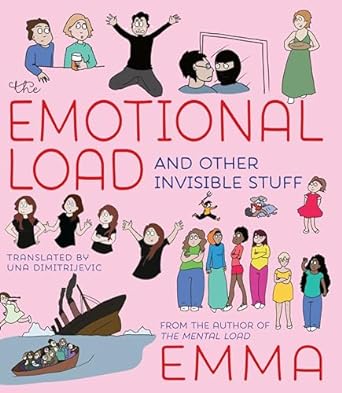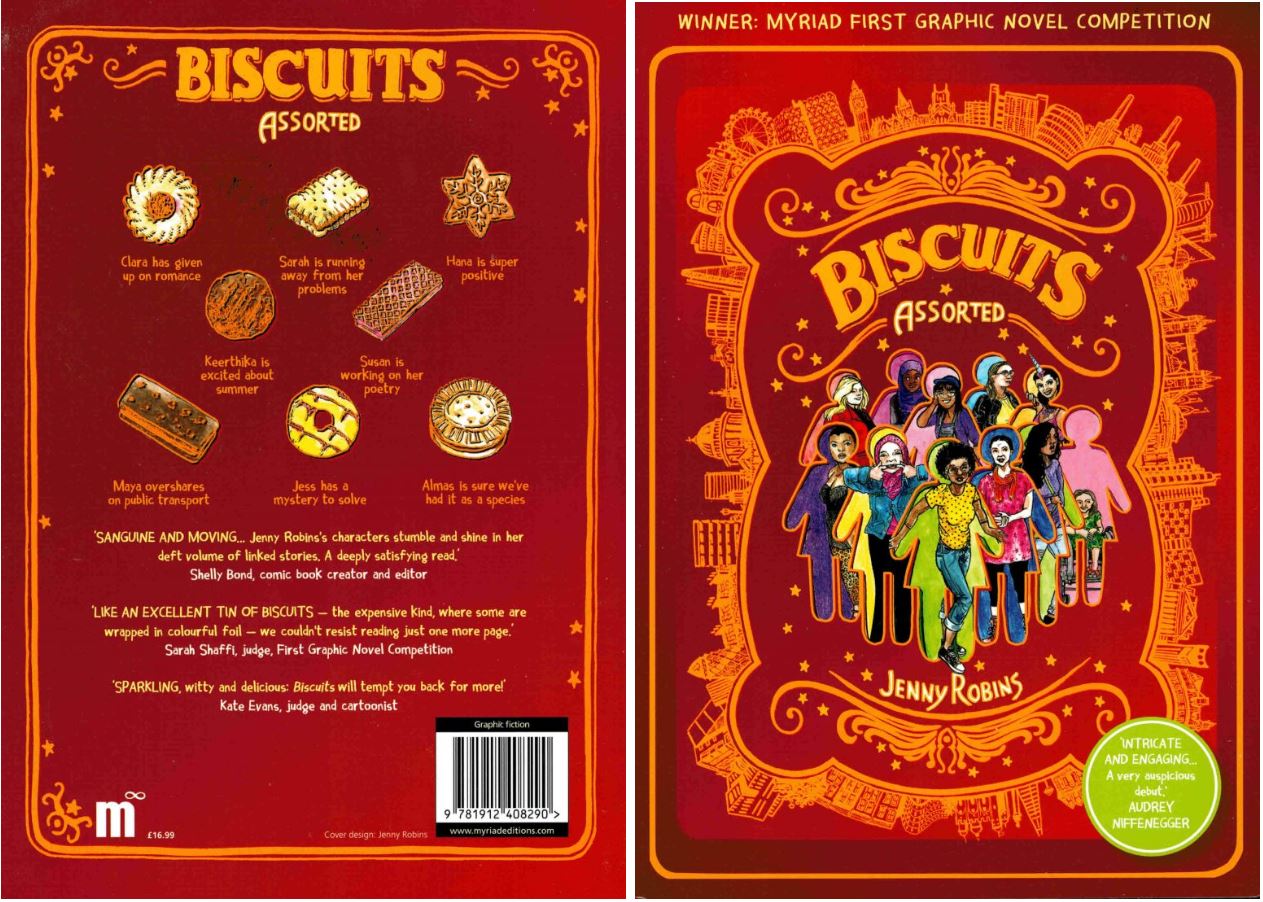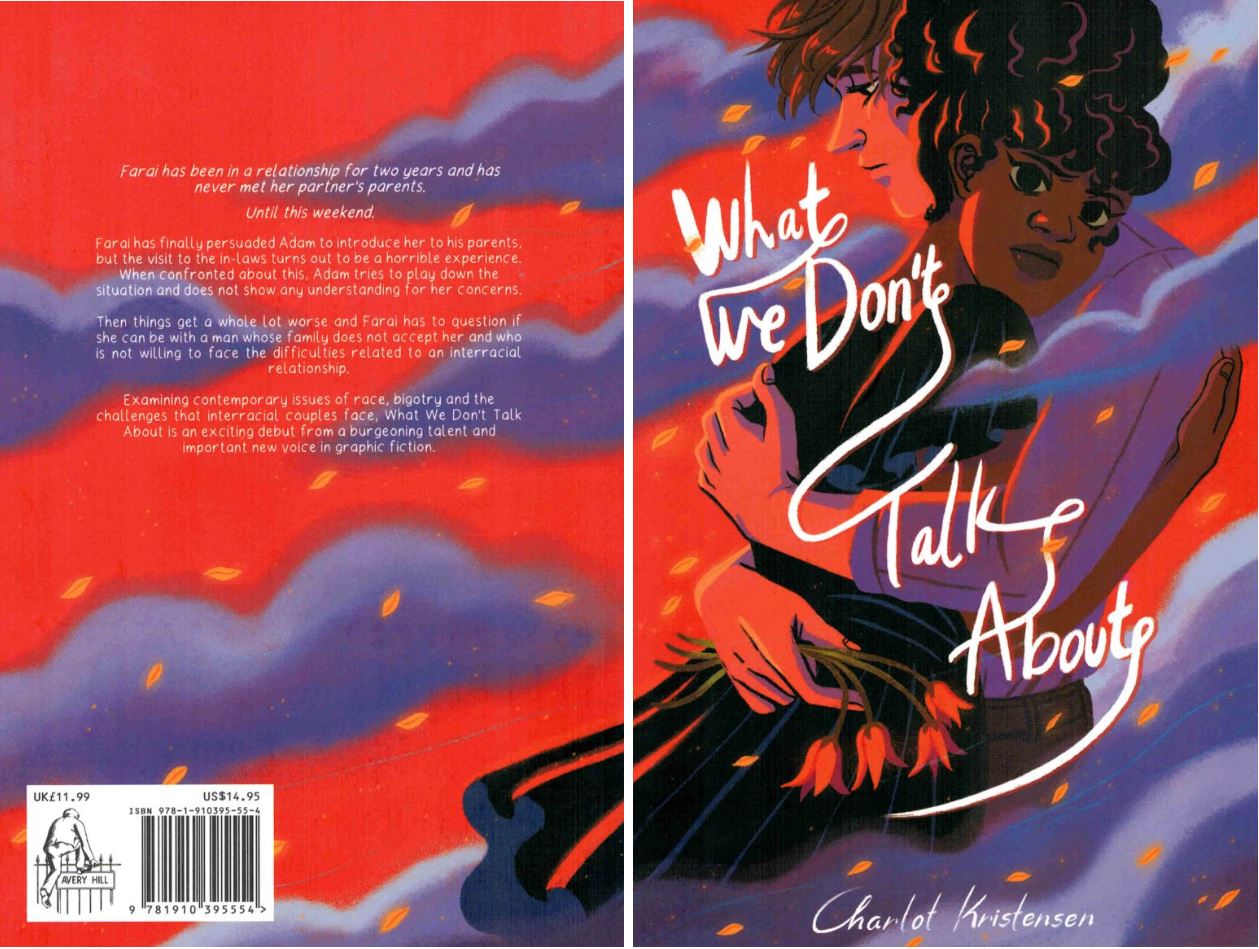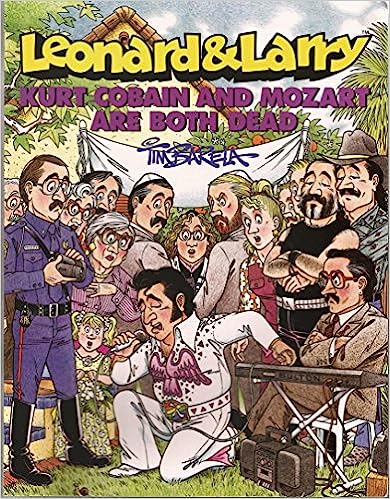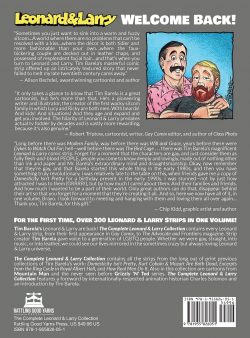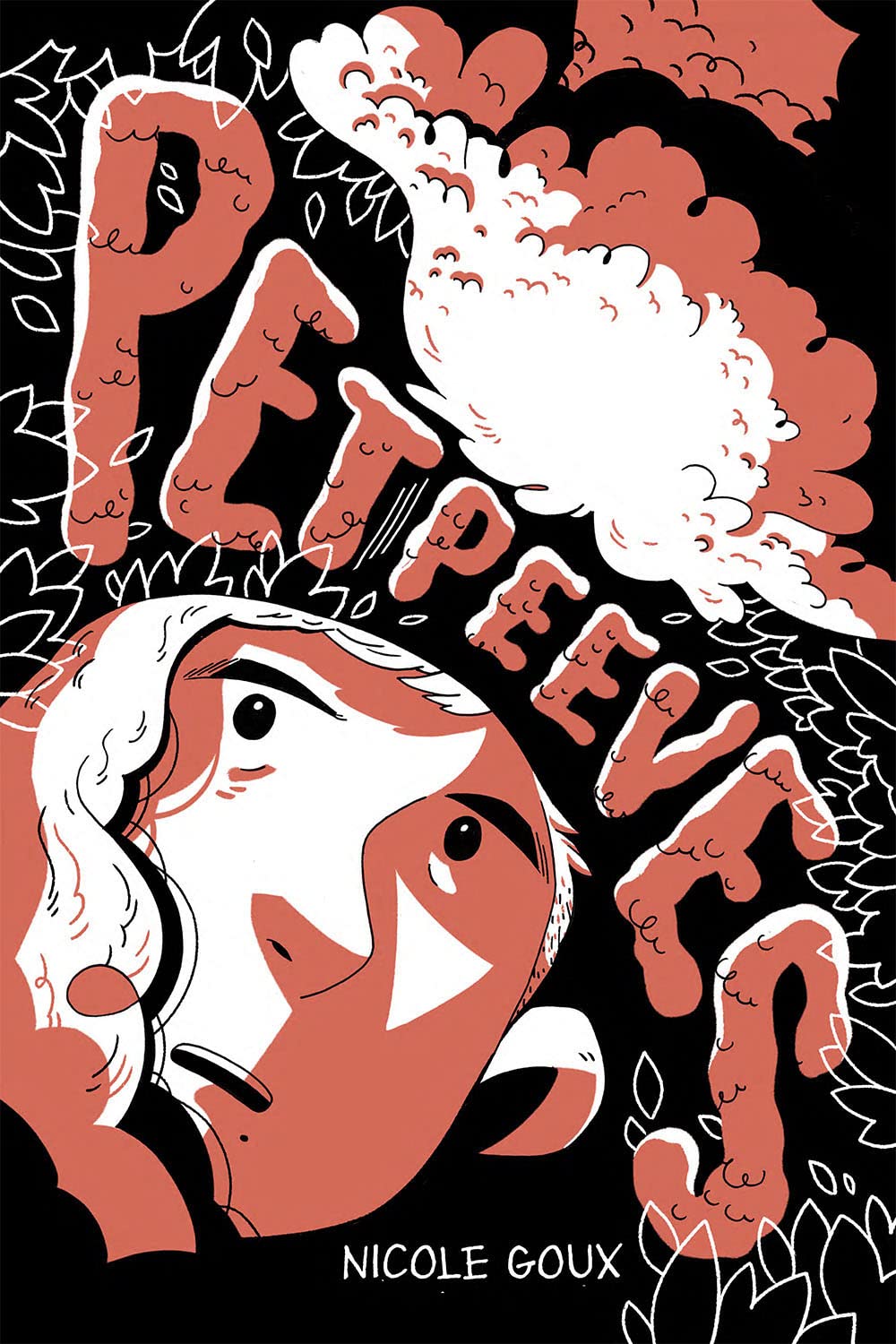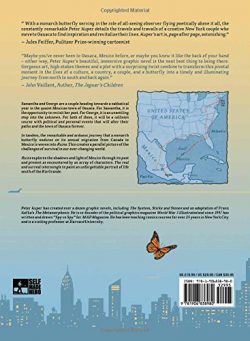
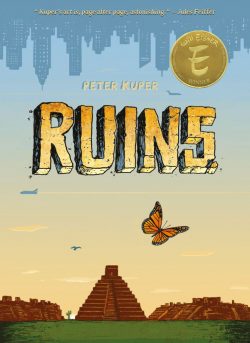
By Peter Kuper (SelfMadeHero)
ISBN: 978-1-914224-18-8 (TPB/Digital edition)
Multi award-winning artist, storyteller, illustrator, educator and activist Peter Kuper was born in Summit, New Jersey in 1958, before the family moved to Cleveland, Ohio when he was six. Growing up there he (briefly) met iconic Underground Commix pioneer R. Crumb and at school befriended fellow comics fan Seth Tobocman (Disaster and Resistance: Comics and Landscapes for the 21st Century, War in the Neighborhood, You Don’t Have to Fuck People Over to Survive).
As they progressed through the school system together, Kuper & Tobocman caught the bug for self-publishing. They then attended Kent State University together. Upon graduation in 1979, both moved to New York and whilst studying at Brooklyn’s Pratt Institute and The Art Students League created – with painter Christof Kohlhofer – landmark political art/comics magazine World War 3 Illustrated. Separately and in conjunction, in comics, illustration and via art events, Kuper & Tobocman continued championing social causes, highlighting judicial and cultural inequities and spearheading the use of narrative art as a tool of activism.
Although a noted and true son of the Big Apple now and despite brushing with the comics mainstream as Howard Chaykin’s assistant at Upstart Associates, most of Kuper’s singularly impressive works are considered “Alternative” in nature, deriving from his regular far-flung travels and political leanings. Moreover, although being about how people are, much of his oeuvre employs cityscapes and the natural environment as bit players or star attractions.
When not binding his own “Life Lived in Interesting Times” into experimental narratives – such as with 2007’s fictively-cloaked Stop Forgetting To Remember: The Autobiography of Walter Kurtz – or bold yarns like Sticks and Stones (2005), Kuper created The New York Times’ first continuing strip (1993’s Eye of the Beholder) and regularly adapts to strip form literary classics like Upton Sinclair’s The Jungle (1991), Conrad’s Heart of Darkness (2019), Kafka’s short stories Give It Up! (1995) and Kafkaesque (2018) as well as longer works like The Metamorphosis (2003), all while creating his own unique canon of intriguing graphic novels and visual memoirs.
Amongst the so many strings to his bow – and certainly the most high-profile – was a brilliant stewardship of Mad Magazine’s beloved Spy Vs. Spy strip, which he inherited from creator Antonio Prohias in 1997, and he also chases whimsy in children’s books like 2006’s Theo and the Blue Note or experimental exercise The Last Cat Book (1984: illustrating an essay by Robert E Howard). Whenever he travelled – which was often – he made visual books such as 1992’s Peter Kuper’s Comics Trips – A Journal of Travels through Africa and Southeast Asia. Three years later he undertook a bold creative challenge for DC’s Vertigo Verité imprint: crafting mute, fantastically expressive thriller/swingeing social commentary The System.
Kuper’s later comics – all equally ambitious and groundbreaking – had to make room for his other interests as he became a successful commercial illustrator (Newsweek, Time, The Nation, Businessweek, The Progressive, Rolling Stone, The New Yorker, Entertainment Weekly and more), lecturer in Graphic Novels at Harvard, a teacher at Parsons School of Design and The School of Visual Arts and – since 1988 – co-Art Director of political action group INX International Ink Company. Translated into many languages, he has built a thriving occupation as a gallery artist exhibiting globally and scored a whole bunch of prestigious Fellowships and Educational residencies as a result.
He still finds time to pursue his key interests – such as contributing to benefit anthology Comics for Ukraine: Sunflower Seeds and cultivates a lifelong passion for entomology. This hobby infused 2015’s fictionalized autobiographical episode Ruins: an Eisner Award winning tome now available again in an enthralling trade paperback edition.
A passionate multilayered tale of crisis, confrontation and renewal infused by his ecological concerns, political leanings, rage against authoritarianism and love of Mexico, it draws from the same deep well as 2009’s Diario De Oaxaca: A Sketchbook Journal of Two Years in Mexico. Between 2006 and 2008, Kuper, his wife and young daughter lived in Oaxaca, absorbing astounding historical and cultural riches, beguiling natural wonders, hearty warmth and nonjudgemental friendliness. They also witnessed how a teacher’s strike was brutally and bloodily suppressed by local governor/dictator Ulises Ruiz Ortiz – AKA “URO” – in a series of events with a still heavily disputed death toll scarring the region and citizens to this day.
Part travelogue, part natural history call to arms and paean to the culture of Oaxaca, Kuper’s tale details a marriage in crisis played out against a disintegrating crisis of governance. Recently unemployed, socially withdrawn and emotionally stunted museum illustrator/bug lover George finally capitulates and voyages to the Mexican dreamland his wife Samantha has been pining for since before they met. Under the aegis of a sabbatical year taken to write a book on pre-conquest Mexico, she has dragged him out of ennui and churlish career doldrums to a place where he can indulge his abiding love of insects, if not her…
For Samantha, it’s a return to a paradisical place and magical time, albeit one where she loved and lost her first husband. That’s not the sole cause of growing friction between the increasingly at odds couple. The lengthy trip’s overt intention of reuniting them falters as she is drawn deeply into stories of how the Conquistadors destroyed Mesoamerican cultures they found and highlights parallels to her own plight. There are other earthier distractions she just can’t shake off too…
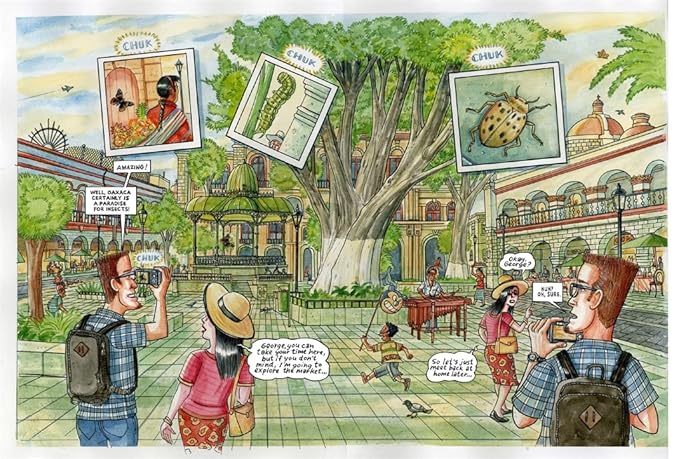
Slowly, George’s intransigence melts as he meets people willing to tolerate his ways, see beyond his shell, and share the history, geology, geography and serenely easy-going culture that eventually penetrates his crusty exterior. All manner of distracting temptations – like the infinite variety of cool bugs! – are endless and constant as he makes friends and finds healthier ways to express himself. He even tries to renew his constrained relationship with Samantha, but there will always be one impossible, impassable barrier to their future happiness…
… And then they’re caught up in the Teachers’ strike and extra-judicial methods Governor URO employs to end it even as George achieves the milestone life goal he never thought possible and visits the Michoacan forest where Monarchs come to breed and die.
… And finds it expiring from human intrusion…
Acting as thematic spine and tonal indicator for the unfolding story, each chapter follows – with snapshot scenes of changing, degrading landscapes – the epic flight of a lone Monarch butterfly, from its start in Canada, across America to the forest’s lepidopteran devotee George ostensibly left his comfort zone home to see.
With overtones of Peter Weir’s film The Year of Living Dangerously (and Christopher Koch’s novel too), Ruins layers metaphor upon allegory, distilling political, ecological and personal confrontation into a powerfully evocative account of people at a crossroads. Inspirationally visualised in a wealth of styles by a true master of pictorial narrative and classic drama, this new paperback edition also includes an ‘Afterwords’ where the author adds context to the still ongoing saga of the civil war crime underpinning his story.
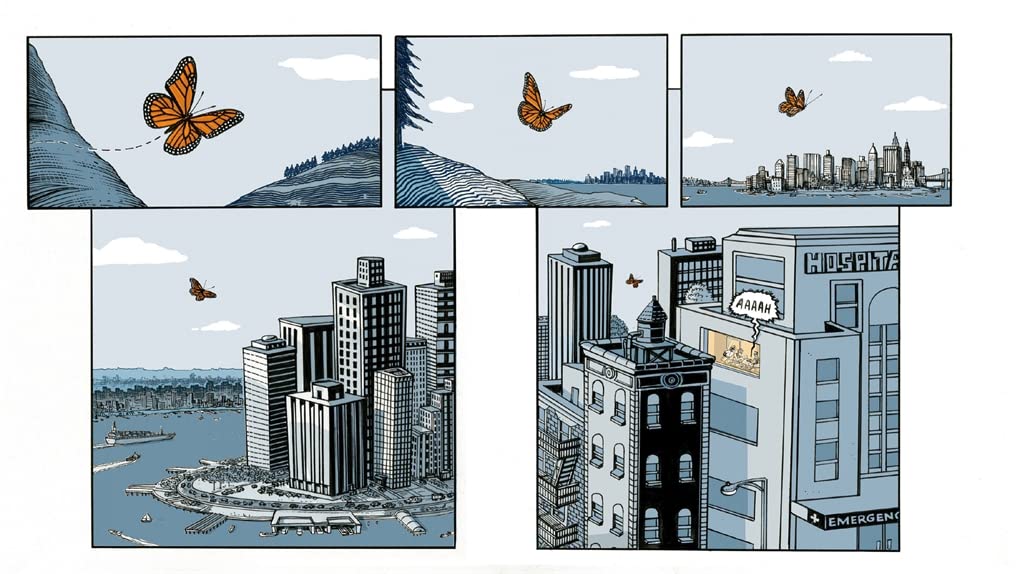
Clever, charming, chilling and compulsively engrossing, this delicious exercise in interconnectivity is a brilliant example of how smart and powerful comics can and should be.
© Peter Kuper 2015. All rights reserved.

